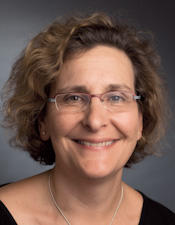Population-based registry data identifies novel cancer patterns in families of childhood cancer patients
- Published:

A collaboration between the Finnish Cancer Registry and Dana-Farber/Boston Children’s Cancer and Blood Disorders Center explored the utility of population-based registry data to screen childhood cancer patients for history of familial cancer. The study opened a new method for identifying high risk families that may reveal possible novel cancer predisposition genes.
Using Finnish population-based registry data, the study revealed that the risk of cancer under the age of 40 years in relatives of childhood cancer patients was 12% higher that in the general population.
This large population-based study explored the risk of cancer in the parents and siblings as well as the offspring and nephews and nieces of childhood cancer patients.
“The risk of cancer in the offspring and siblings of childhood cancer patients is elevated but not to a great extent,” Laura Madanat-Harjuoja, a post-doctoral researcher at Dana-Farber Cancer Institute and the first author of the paper published recently in Cancer, comments.
The study was conducted using registry data. Individuals diagnosed with cancer under the age of 21 years between 1970 and 2021 were identified from the Finnish Cancer Registry. Their relatives were then identified by linking to the population registry, after which information on cancer in relatives was obtained by linking back to the Finnish Cancer Registry.
As expected, the risk of cancer was highest in offspring of retinoblastoma patients, being 70-fold compared to the general population. The risk of cancer was four-fold elevated in the offspring of bone tumor patients compared to the general population, possibly indicating a cancer-predisposition syndrome like Li-Fraumeni Syndrome. Risk of cancer in siblings of lymphoma patients was 60% higher than expected based of the general population, a novel finding which the investigators plan to investigate further in the upcoming clinical studies.
Only 20% of sibling pairs with cancer had a recognizable cancer predisposition syndrome
One of the aims of the study was to see how registry data can be used to screen families for cancer predisposition. The authors focused on families with two family members with early onset cancer. Researchers identified 44 siblings pairs, families in which 2 children were diagnosed with cancer.
Dr. Madanat-Harjuoja explained her results, noting that these families made up only 2% of the entire dataset. Only about 20% of these pairs had syndromes that pediatric oncologists already recognize. Dr. Lisa Diller, senior author on the manuscript and a member of the faculty at Dana-Farber/Boston Children’s, explained that this work “may help us identify new patterns of rare cancer predisposition syndromes.”
The investigators are setting up a study which includes blood collection from the affected families with the hope of uncovering novel cancer predisposition genes.
The Finnish bottleneck population and high-quality population registries offer an ideal landscape for the study of cancer clusters and has in the past led to the discovery of several cancer predisposition genes.
Diagnosis of a cancer predisposition syndrome can identify families and children who should undergo cancer screening, allowing early detection of cancer, and can also create new insights into cancer biology and genetics more broadly.

 Translate
Translate